Whether you are looking to create a single prototype or prepare for mass production, reducing manufacturing costs is often a top priority when it comes to CNC machining.
Fortunately, as a designer, your decisions can greatly affect the final pricing. By following the Design for Machinability tips in this article, you can manufacture parts optimized to minimize cost and still meet your design requirements.
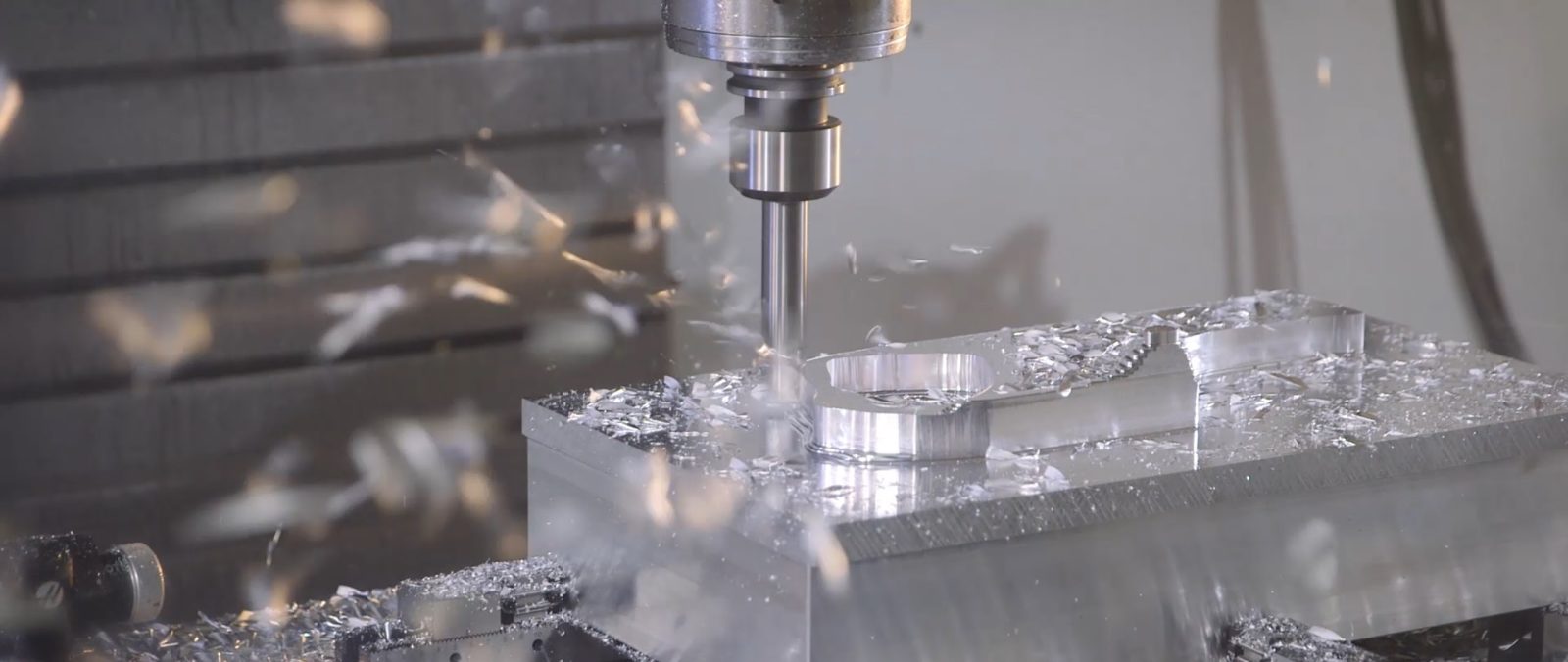 What affects the cost of CNC parts?
What affects the cost of CNC parts?
The price of CNC machined parts depends on the following factors:
●Processing time: The longer it takes to process a part, the more expensive it will be. In CNC, machining time is often the main cost driver.
● Start-up costs: These are related to CAD file preparation and process planning, and are of great significance for small batch production. This cost is fixed and there is an opportunity to reduce unit price by exploiting "economies of scale".
●Material cost: The cost of materials and the difficulty of material processing have a great impact on the overall cost. Optimizing the design while considering certain material factors can significantly reduce the price.
●Other manufacturing costs: When you design a part with special requirements (for example, when you define tight tolerances or design thin walls), then special tooling, tighter quality control, and more machining steps may be required (to lower processing speed). Of course, this has an impact on total manufacturing time (and price).
Now that the source of CNC cost is clear, let's see how to optimize the design to minimize it...
Tip 1: Add a radius to the inner vertical edges
All CNC milling tools have a cylindrical shape and create a radius when cutting the edge of the pocket.
Use a smaller diameter tool to reduce the corner radius. This means multiple passes at lower speeds—smaller tools can’t remove material as quickly in a single pass as larger ones—adding to machining time and cost.
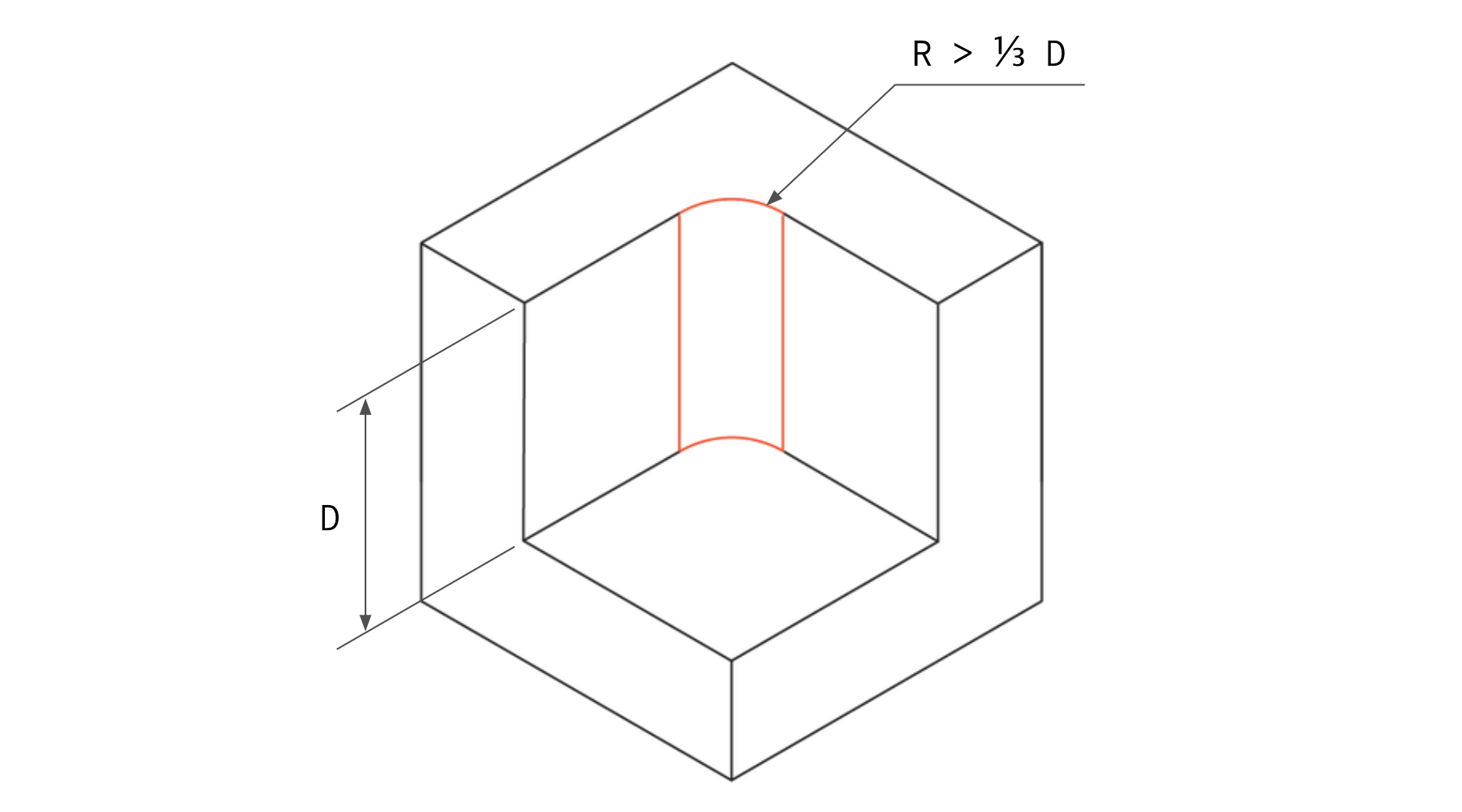 Minimize cost:
Minimize cost:
● Add a radius of at least 1/3 the cavity depth (bigger is better).
● It is best to use the same radius on all inner edges.
●At the bottom of the cavity, specify a small radius (0.5 or 1 mm) or no radius at all.
Ideally, the corner radius should be slightly larger than the radius of the tool used to machine the pocket. This will reduce the load on the tool and will further reduce manufacturing costs. For example, if your design has a 12mm deep cavity, add a 5mm (or more) radius to the corners. This will allow a ø8mm cutter (4mm radius) to cut them faster.
Tip 2: Limit the depth of the cavity
If you need an inner edge with sharp corners (for example, when a rectangular part needs to fit into a cavity), use a shape with an undercut instead of reducing the radius of the inner edge, like this:
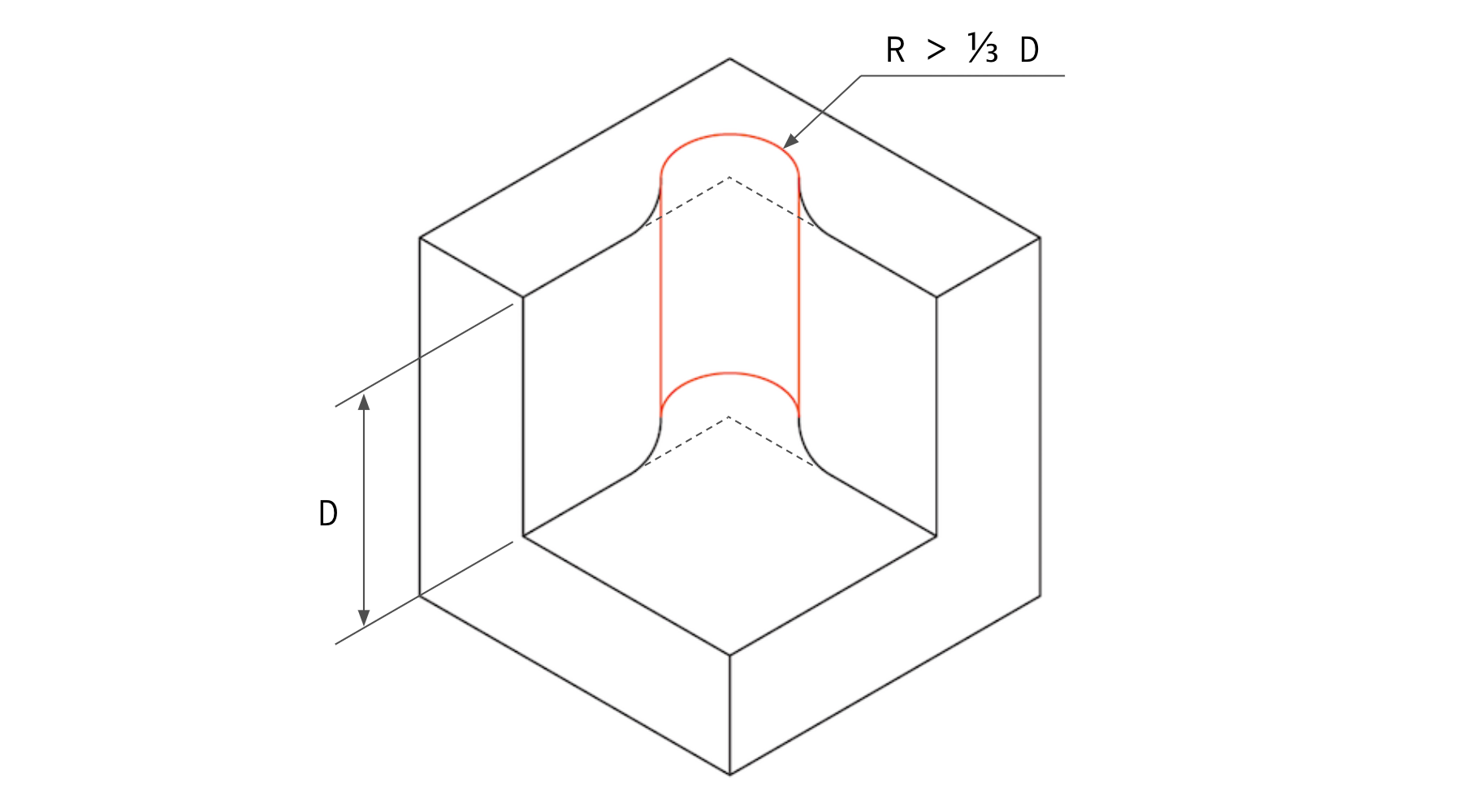

Machining deep cavities can greatly impact the cost of CNC parts, as large amounts of material need to be removed, which is time-consuming.
It's important to remember that CNC tools have limited cutting lengths: generally, they work best when they are 2-3 times as deep as their diameter. For example, a ø12 cutter can safely cut pockets up to 25 mm deep.
Deeper cavities (up to 4 times the tool diameter or more) can be cut, but this adds cost because of the need for specialized tools or a multi-axis CNC system.
Additionally, when cutting the cavity, the tool must be tilted to the correct depth of cut. A smooth entrance requires enough space.
Minimize cost:
● Limit the depth of all cavities to 4 times their length (that is, the largest dimension in the XY plane).
Tip 3: Increase the thickness of thin walls
Thick solid sections are more stable (less expensive to machine) and should be preferred unless weight is the main factor.
To avoid distortion or breakage when machining thin walls, multiple passes at low depths of cut are required. Thin features are also prone to vibration, making them challenging to precisely machine and can significantly increase machining time.
 Minimize cost:
Minimize cost:
● For metal parts, the design wall thickness is greater than 0.8 mm (the thicker the better).
● For plastic parts, keep the minimum wall thickness above 1.5 mm.
The minimum achievable wall thickness is 0.5 mm for metal and 1.0 mm for plastic. However, the machinability of these features must be assessed on a case-by-case basis.
Tip 4: Limit the length of threads
Specifying a thread longer than necessary may increase the cost of the CNC part due to the possible need for special tooling.
Keep in mind that threads longer than 0.5 times the hole diameter will not actually increase the strength of the connection.
 Minimize cost:
Minimize cost:
● Design a thread with a maximum length of 3 times the hole diameter.
●For threads in blind holes, it is best to add at least 1/2 of the diameter of the unthreaded length to the bottom of the hole.
Tip 5: Design Standard Size Holes
Holes can be CNC machined quickly and with high precision using standard drills. For non-standard sizes, the hole must be machined with an end mill, which can add to the cost.
Also, limit the depth of all holes to 4 times their diameter. Deeper holes (up to 10 times the diameter) can be made, but they can add cost because they are difficult to machine.
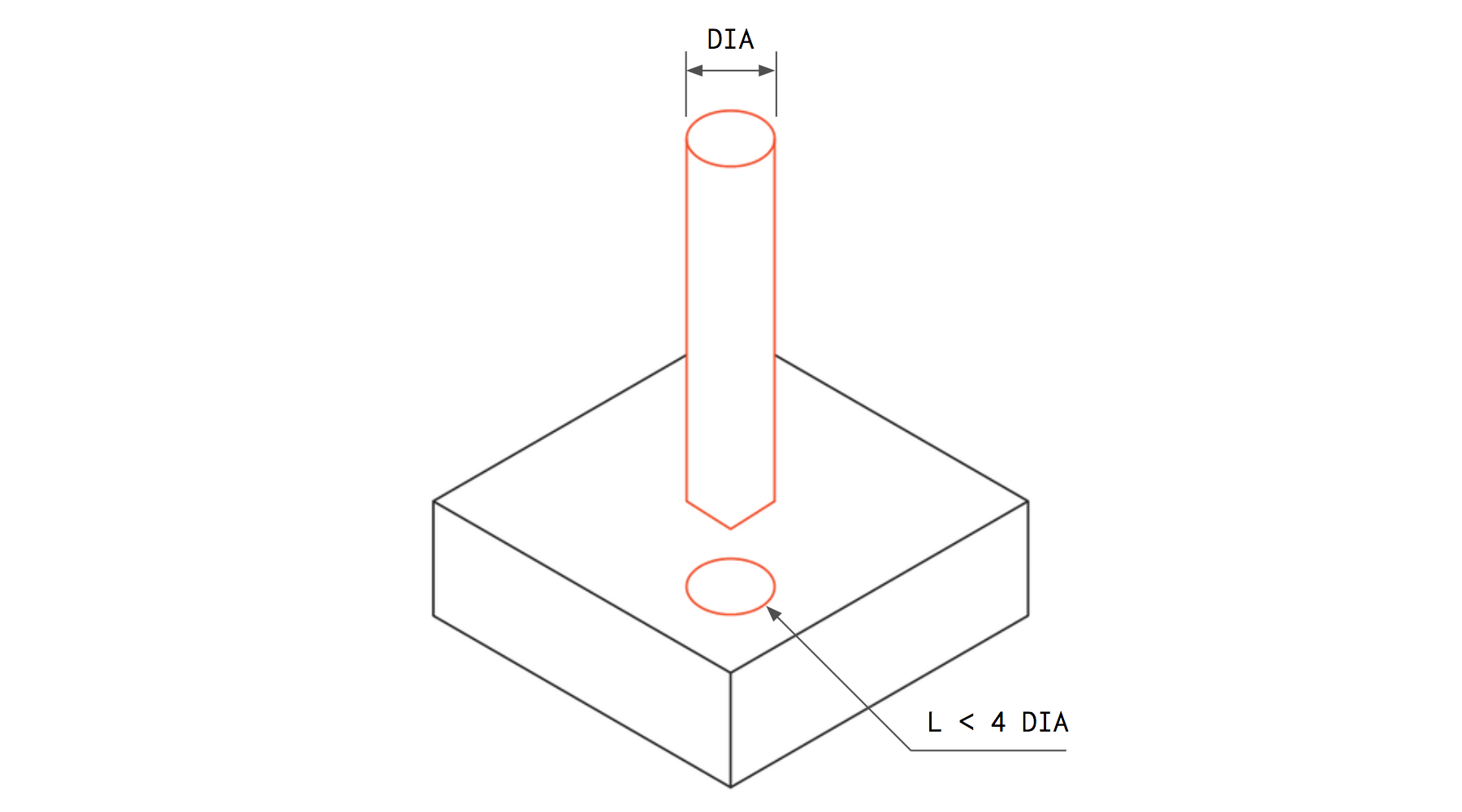 Minimize cost:
Minimize cost:
● For holes with a diameter less than or equal to 10 mm and greater than 0.5 mm, the diameter increment of the design hole is 0.1 mm.
● When designing in inches, use traditional fractional inches or refer to this fractional inch drill size chart.
● Design a hole with a length up to 4 times its diameter.
Tip 6: Define tight tolerances only when necessary
Defining tight tolerances increases the cost of the CNC as it both increases machining time and requires manual inspection. Tolerances should be carefully defined only when necessary.
If no specific tolerances are defined on the technical drawing, the part will be machined using standard tolerances (±0.125mm or higher), which is sufficient for most non-critical features.

Tight tolerances on internal features are especially difficult to achieve. For example, when machining intersecting holes or cavities, small defects (called burrs) may develop on the edges due to material deformation. Parts with such features need to be inspected and deburred, both of which are manual (and time-inefficient) processes that add cost.
Minimize cost:
● Specify tighter tolerances only when necessary.
● Define a single datum (such as a cross-section of two edges) as a reference for all toleranced dimensions.
The use of geometric dimensioning and tolerancing (GD&T) in technical drawings such as flatness, straightness, roundness and true position can reduce the cost of CNC machining as they usually define looser tolerances but require advanced design knowledge to be effectively applied.
 Tip 7: Keep the number of machine settings to a minimum
Tip 7: Keep the number of machine settings to a minimum
Rotating or repositioning parts increases manufacturing costs because it usually needs to be done manually. Additionally, for complex geometries, custom fixtures may be required, further increasing the cost. Particularly complex geometries may require a multi-axis CNC system, further increasing the price.
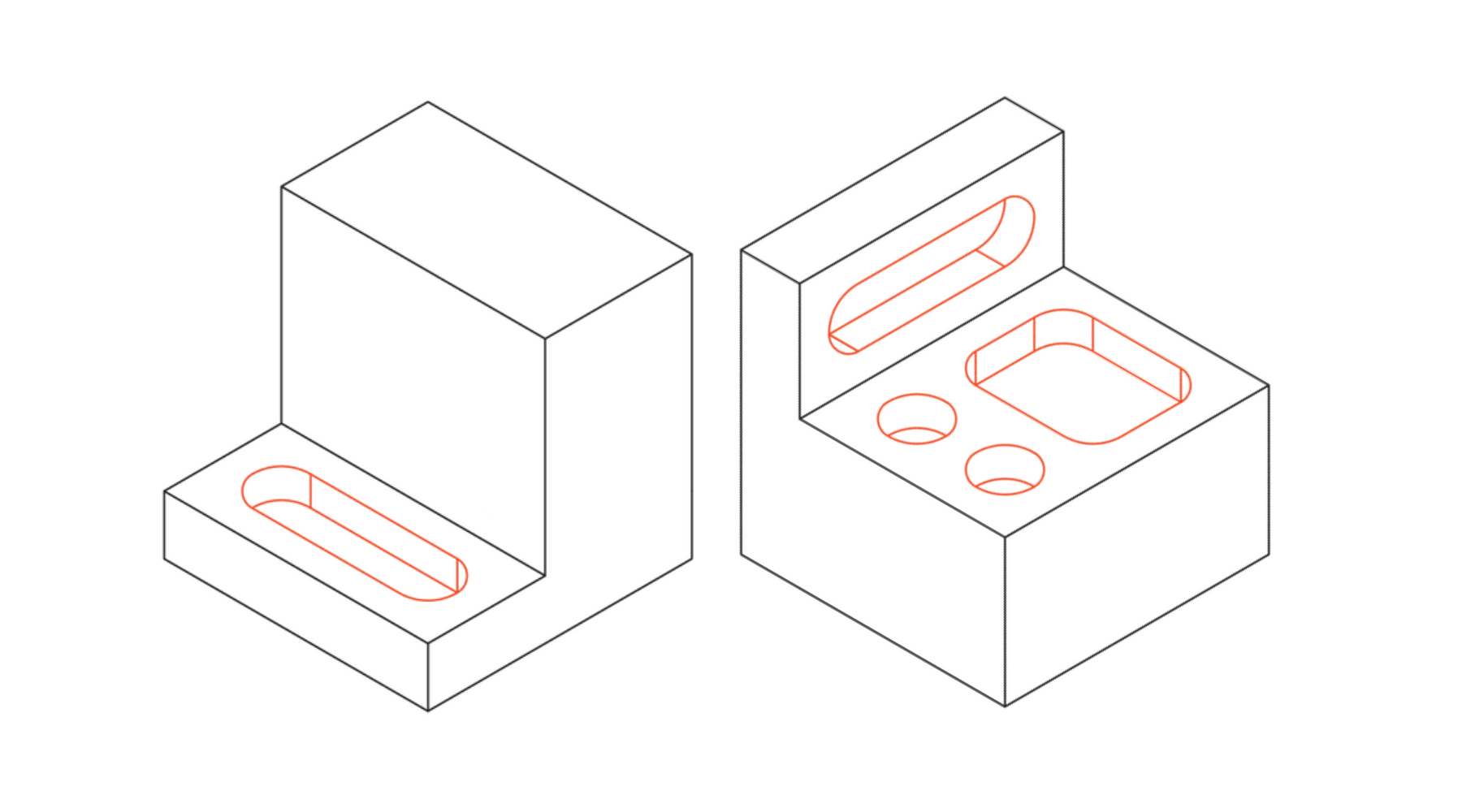
Consider splitting parts into geometry that can be CNC machined in one setup, then bolted or welded together. This also applies to parts with very deep cavities.
Minimize cost:
● Design parts that can only be machined in one setup.
● If this is not possible, divide the geometry into parts for assembly later.
Tip 8: Avoid small features with high aspect ratios
Small features with high aspect ratios are prone to vibration and are especially difficult to machine accurately.
To increase their stiffness, they should be attached to thicker walls or reinforced with bracing support ribs (preferably four: one on each side).
 Minimize cost:
Minimize cost:
● Design features with an aspect ratio of less than 4.
● Add bracing or attach small features to walls to increase their stiffness.
Tip 9: Remove all text and lettering
Adding text to the surface of CNC machined parts can add significant cost because of the additional and time-consuming machining steps required.
Surface finishing methods, such as silk screen printing or painting, are a more cost-effective method of adding text to the surface of CNC machined parts.
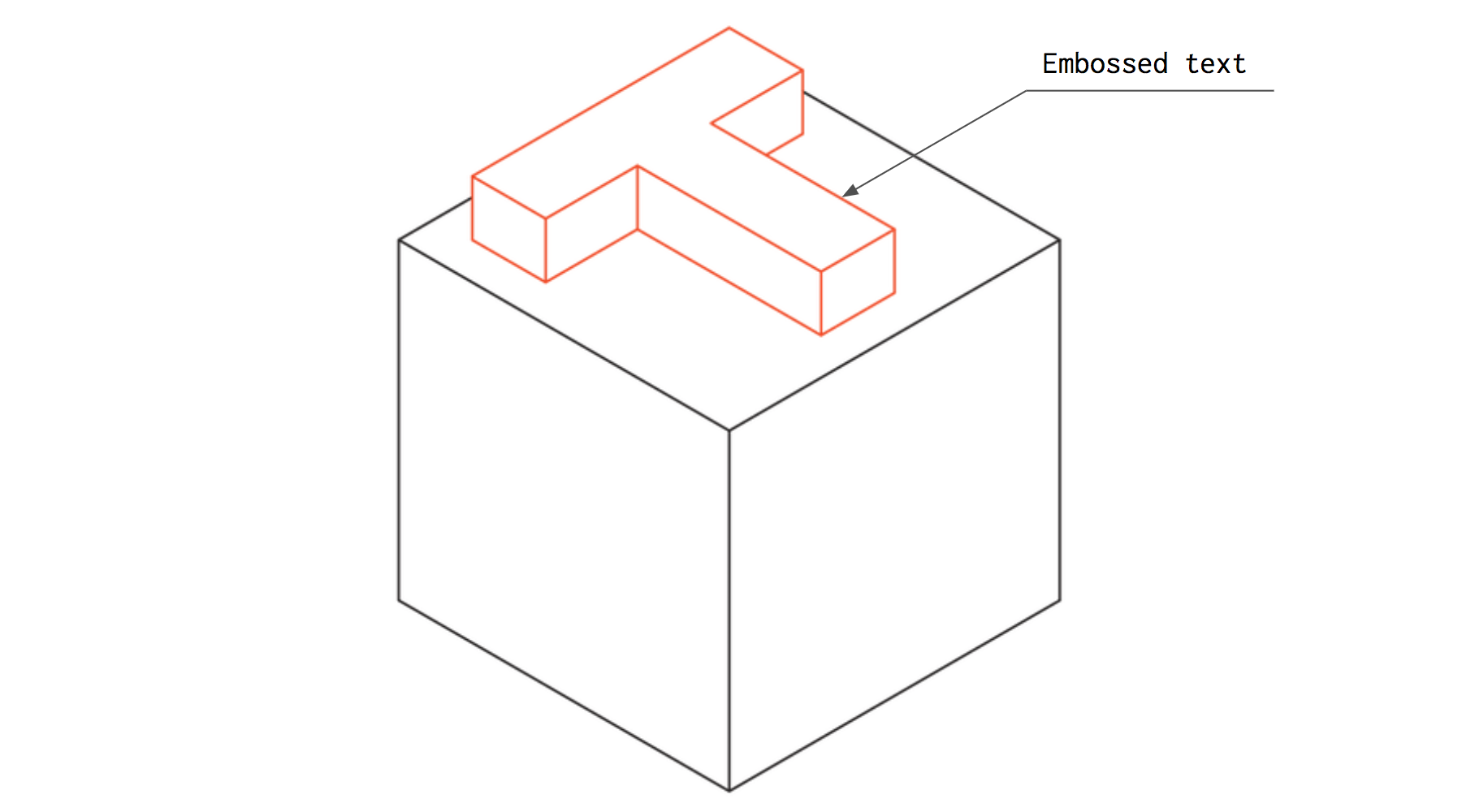
Minimize cost:
● Delete all characters and letters on CNC machined parts.
● If text is required, prefer engraving rather than embossing, as the latter requires more material to be removed.
Tip 10: Consider material machinability
Machinability refers to how easily a material can be cut. The higher the machinability, the faster the CNC can process the material, reducing costs.
The machinability of each material depends on its physical properties. Generally, the softer (and more ductile) the metal alloy, the easier it is to machine.
Minimize cost:
If you can choose between materials, choose one with better machinability (especially for high volume orders).
Tip 11: Consider the cost of bulk materials
The cost of materials is another factor that can greatly affect the price of CNC machined parts.
Aluminum 6061 is clearly the most cost-effective material for making metal prototypes because it combines low cost with very good machinability.
Minimize cost:
● Choose materials with low bulk cost (especially for small batch orders).
Tip 12: Avoid (multiple) surface treatments
Surface treatments improve the appearance and resistance of CNC machined parts to harsh environments, but also increase their cost.
Requiring multiple different finishes on the same part further increases the price because of the extra steps required.
Minimize cost:
● Select the surface finish after processing.
● Request multiple finishes only when absolutely necessary.
Tip 13: Consider whitespace size
The size of the blank can affect the overall cost, and to ensure good accuracy, some material must be removed from all edges of the part. This can have a significant impact on material costs (especially for high volume orders). As a rule of thumb, the blank must be at least 3mm larger than the end.

--------------------------------------------------------------------------END------------------------------------------------------------------------------------------------------------






 Minimize cost:
Minimize cost:






